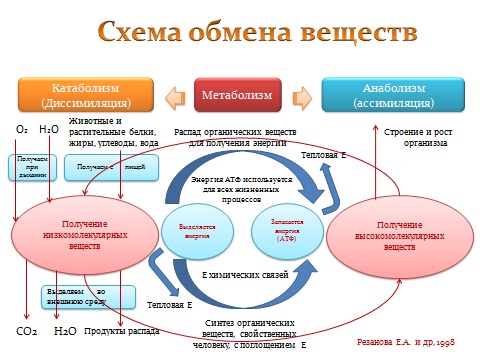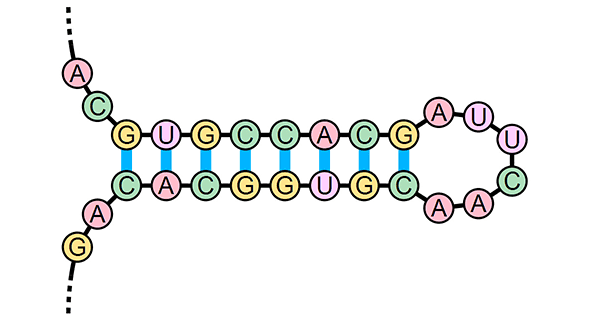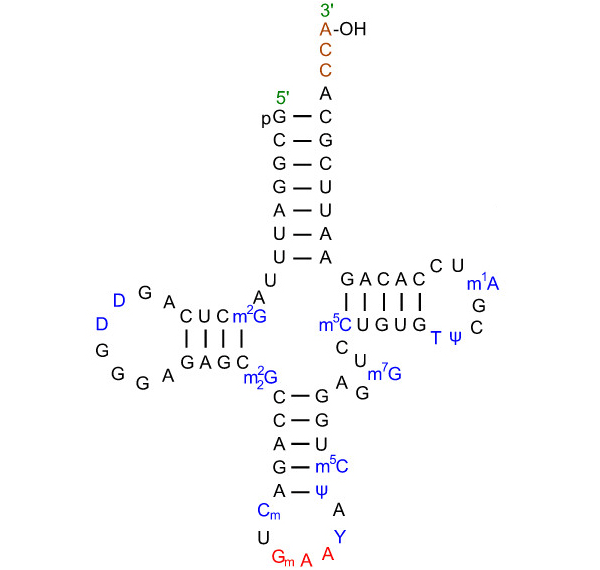About RNA molecules
About ribonucleic acids (RNA)
To maintain life in a living organism, many processes occur. Some of them we can observe - breathing, eating, getting rid of waste products, receiving information from the senses and forgetting this information. But most of the chemical processes are hidden from view.

Reference. Classification
Scientifically, metabolism is metabolism.
Metabolism is usually divided into two stages:
during catabolism, complex organic molecules break down into simpler ones, producing energy; (energy is wasted)
in the process of anabolism, energy is expended on the synthesis of simple biomolecules from simple molecules. (energy stored)
Biomolecules, as seen above, are divided into small and large molecules.
Small:
Lipids (fats), phospholipids, glycolipids, sterols, glycerol lipids,
Vitamins
Hormones, neurotransmitters
Metabolites
Large:
Monomers, oligomers and polymers.
')
Monomers Oligomers Biopolymers
Amino acids Oligopeptides Polypeptides, proteins
Monosaccharides Oligosaccharides Polysaccharides (starch, cellulose)
Nucleotides Oligonucleotides Polynucleotides, (DNA, RNA)
In the column of biopolymers are polynucleotides. This is where ribonucleic acid is located - the object of the article.
Ribonucleic acids. Structure, purpose.

The figure shows the RNA molecule.
Nucleic acids of DNA and RNA are present in the cells of all living organisms and perform the functions of storing, transferring and implementing hereditary information.
The similarity and difference between RNA and DNA
As can be seen, there is an external similarity with the known structure of the DNA molecule (deoxyribonucleic acid).
However, RNA can have both double-stranded and single-stranded structure.
Nucleotides (pentagons and hexagons in the figure)
In addition, an RNA strand consists of four nucleotides (or nitrogen bases, which are one and the same): adenine, uracil, guanine, and cytosine.
A DNA strand consists of a different set of nucleotides: adenine, guanine, thymine, and cytosine.
Chemical structure of polynucleotide RNA:

As you can see, there are characteristic nucleotides uracil (for RNA) and thymine (for DNA).
All 5 nucleotides in the picture:

The hexagons in the figures are benzene rings into which, instead of carbon, other elements are embedded, in this case, nitrogen.
Benzene. For reference.
The chemical formula of benzene is C6H6. Those. in each corner of the hexagon is a carbon atom. 3 additional internal lines in the hexagon indicate the presence of double covalent bonds between these carbon atoms. Carbon is an element of the 4th group of the periodic table. Therefore, it has 4 electrons that can form a covalent bond. In the figure, one bond is with the hydrogen electron, the second is with the carbon electron on the left, and another 2 with 2 carbon electrons on the right. However, physically there is a single electron cloud covering all 6 carbon atoms of benzene.

Compound nitrogen bases
Complementary nucleotides bind to each other (hybridize) using hydrogen bonds. Adenine is complementary to uracil, and guanine to cytosine. The longer complementary regions on a given RNA, the stronger the structure they will form; on the contrary, short sections will be unstable. This determines the function of a particular RNA.
In the figure, a fragment of the complementary region of RNA. Nitrogenous bases are painted in blue

RNA structure
The adhesion of many nucleotide groups is formed by RNA hairpins (primary structure):

Multiple studs in a ribbon interlock in a double helix. In expanded form, this structure resembles a tree (Secondary structure):

Spirals also interact with each other (tertiary structure). You can see how different spirals are connected to each other:

Other RNAs fold similarly. Reminds a set of tapes (quaternary structure).

Conclusion
To calculate the conformations that will take RNA, according to their primary sequence, there are programs
There are many tasks in the process of solving. For example, the phenomenon of RNA interference , telomerase RNA component
Perhaps one of you, the participants of Habr, will take part in one of these projects))
Source: https://habr.com/ru/post/187814/
All Articles